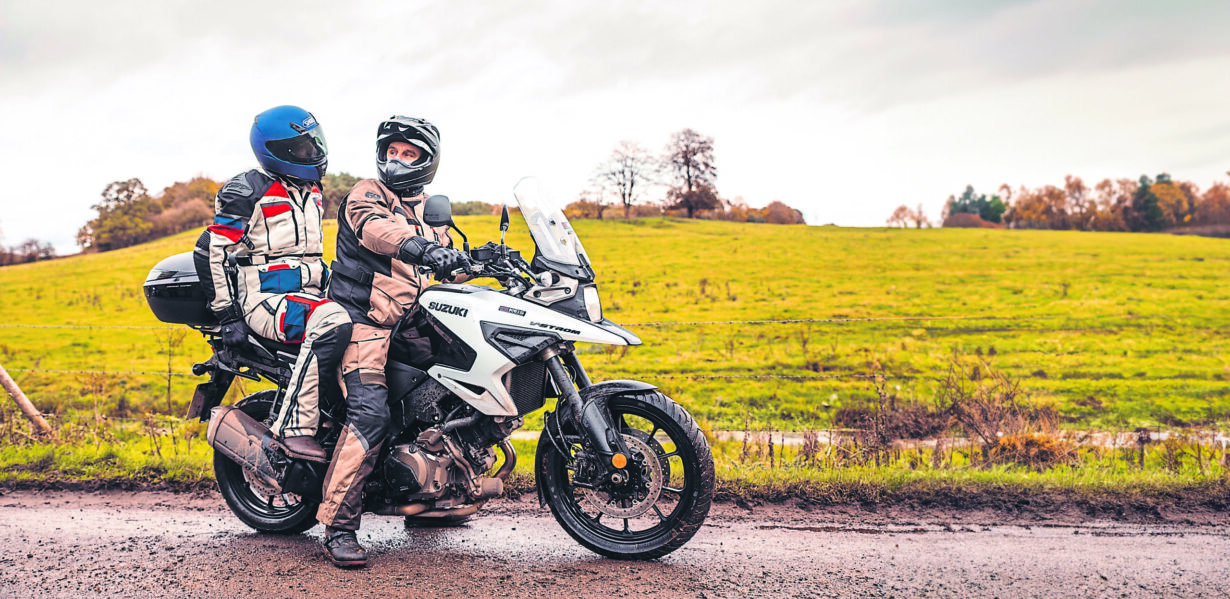There are many ways to enjoy riding motorcycles, but there’s something pretty special about sharing the experience with a pillion. However, it does take a little planning and a bit of skill to make it work seamlessly.
We talked to Steve Metcalfe from Phoenix Motorcycle Training to find out exactly how to go about it…
Enjoy everything MSL by reading the monthly magazine, Subscribe here.

Riding a motorcycle is one of the greatest things you can do. Agreed! But being a passenger, or pillion, on a bike divides opinion – some love it, others hate it. To tip the balance and try to land more people in the ‘love it’ camp, it’s important that the rider knows how to ride safely and considerately with a pillion, and communicates clearly what the pillion needs to do to help with this and to enjoy the ride.
Whether it’s just a quick ride with a friend, a longer tour with a partner, or offering a lift to a stranded fellow biker, riding with a pillion can be very useful and a lot of fun.
What’s the old adage? Fail to plan, plan to fail! That goes for taking a pillion, too. Before you even turn a wheel, there are a few key adjustments to make. What you need to do will vary depending on the bike and the pillion, but some of the things to consider are tyre pressure, suspension adjustment and headlight angle. Some modern bikes with tyre pressure monitoring systems, electronic suspension and adaptive headlights might even do a lot of the checks for you, but you will find the specifics about how much you need to adjust any given component in the bike’s owners’ manual, and as you become more accustomed to riding with a pillion, you can make further adjustments based on how the ride feels for you and your passenger.
You also need to adjust your riding style to make two-up riding safe and comfortable for both of you. Because of the extra load on the bike, you may notice a change in the dynamics of the bike as the suspension has to work with more demands from it. This may change the feel of how the bike turns into corners, how stable it feels, and how quickly it reacts to your input.
The added weight of a pillion on the bike will put more demands on you to keep the bike stable from the moment that they climb on. It’s good to practice getting on and off the bike before you set off, rather than end up having to deal with it away from home (nobody needs an audience for that!).
Having a pillion passenger also will demand more from your bike’s engine and brakes. Your acceleration will be slower, and your braking distance longer. Again, get a feel for how this affects the ride before you’re in traffic, and don’t expect the bike to accelerate or stop as quickly as it does with just you on it.
You should also aim to ride smoothly, accelerating and braking with more care and finesse than on solo rides. Avoid harsh use of these controls.
It’s a good idea to take time to explain to your pillion exactly how you want them to behave on the bike. Most people will not know how to get on the pillion perch or appreciate how body movement affects the riding dynamics, unless they have ridden a bike themselves. Not briefing the pillion before the ride may cause you more trouble than having a quick chat to go through the basics before you set off. Also it might help to keep the side-stand down until you’re ready to move off, just as a little extra precaution in case of a wobble when your pillion gets on.
Don’t forget that both the rider and passenger should wear proper protective gear, including a helmet, gloves and durable clothing, to minimise the risk of injury in the event of an accident.
Only a helmet is a legal requirement, but whether you are in the All-Gear-All-The-Time camp, or just rely on the bare minimum to meet legal requirements, you should be responsible and advise your pillion about the benefits of wearing protective gear.
It goes without saying, but you should refrain from showing off your undoubtedly amazing riding skills by riding too fast, pulling wheelies and the like. Scaring the pillion is not cool, and it won’t make the experience a pleasant one for either of you. Finally, if you are a new rider, make sure that you are comfortable riding your bike solo before you take on a pillion. Even when you move on to riding two-up, take your time to get used to the extra weight, and how that affects the bike.
If you want some more pointers, or just want to fast-track your learning, speak to a qualified motorcycle trainer or visit a training school, and you will get up to speed in no time.
The Experts
Phoenix Motorcycle Training
Phoenix Motorcycle Training is the UK’s largest motorcycle training provider, with 22 local training centres. The company provides high-quality courses delivered by fully-accredited instructors, and designed to meet a range of customer needs, from complete beginners to experienced riders.
Tel: 0330 223 4000
Email: [email protected]
Web: phoenixmotorcycletraining.co.uk
Enjoy the ride!






